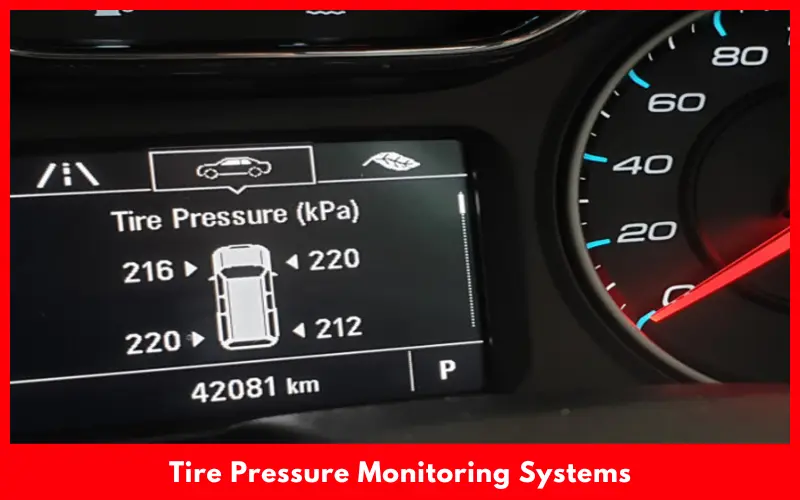If you’re a driver you know this already: safety is everything. Everyone has heard of the horrible car crashes that seem to be more and more plentiful, and it makes you frighteningly aware of the responsibility that comes with steering a tonne of metal around. We found 5 ways to make your car safer.
Person doesn’t matter, and reason doesn’t matter either. The commute? You need to drive, most of us do. Family outings? School, clubs, playdates, if you have kids it never ends! Pleasure?
On the weekend you can finally unwind and relax with the roof down on a convertible or wind in your hair cruising along the open road on two wheels, for many of us this is what makes the 9-5 bearable!)
Article Summary
National Highway Traffic Safety Administration (NHTSA) Statistics
Whatever your current situation, ensuring that your vehicle is as safe as possible should be a priority for everyone. This article looks at five different ways to make your car safer. Most of these will work on a motorbike as well, so if thats your vehicle of choice then you might also find these helpful.
The methods discussed will all be supported by scientific research, statistics, and science. 5 Ways to Make Your Car Safer As safe as possible. As a matter of employee training, the issue of car safety is a bit mind-numbing. After all, car safety in the real world is about avoiding collisions, and protecting the lives of people involved.
Each year, the National Highway Traffic Safety Administration (NHTSA) publishes sobering statistics, estimates that in 2023 alone over 40,000 people died on the roadways in the United States. It is stats like this that make car safety a real consideration for all of us.
Even more reassuring to the consumer is the knowledge that if you are paying attention and use the proper safety measures, the risk of customer injury can be dramatically reduced.
Drive Safely: 5 Ways To Make Your Car Safer
If you drive a car, you are no doubt already practising basic safety measures such as regular maintenance, proper tire inflation, and obedience to all traffic laws. But you can improve the safety of your car in more sophisticated ways as well. Here are five of the best.
1. Advanced Driver Assistance Systems (ADAS)
ADAS is a sophisticated group of electronic systems that assist drivers with basic driving and parking associated functions which are embedded with sensor technologies, detecting nearby hazards, tracking road condition and core information display to the driver.
ADAS features such as lane-keeping assistance, adaptive cruise control and automatic emergency braking could effectively prevent accidents. For example, the Insurance Institute for Highway Safety (IIHS) reported that vehicles equipped with forward collision warning and automatic emergency braking avoided 50 per cent of rear impacts.
Take Volvo’s Pilot Assist, an ADAS feature that helps the driver maintain a set speed, maintain a set distance from the car ahead of it, and even steer. It’s been credited with reducing driver fatigue and improving road safety.
2. LED Headlights
The Evolution of Car Lighting
Gone are the days when our cars used halogen bulbs and old-style headlights. Nowadays LED (Light-Emitting Diode) headlights are becoming mainstream due to high performance and longer durability.

LED headlights, being brighter and more focused than the halogen-type lights used previously, offer a safer driving experience. The IIHS-tested a number vehicles and found that cars with good-rated headlights were involved in fewer nighttime accidents than those with poor-rated headlights.
The relevance of this needs not be overstated. An increase in visibility means not only that the driver himself will be more likely to look in the right direction, but that other road-users will be more likely to see the car, too.
The IIHS report also showed that only 19 per cent of the tested vehicles had ‘good’ headlights. LED lights should upgrade the ones that are really bad. More light means one can see farther, but it also means that one has more time to react to potential hazards that one can see. This makes driving at night much safer.
3. Blind Spot Monitoring
Blind spots are areas surrounding a vehicle that drivers cannot observe with the help of rearview and side mirrors. These blind spots bring about great difficulties, especially when a driver changes lanes or merges onto highways.
Blind Spot Monitoring (BSM) systems use sensors to detect vehicles present in the driver’s blind spots, and provide visual or auditory alerts. State-of-the-art BSM systems even override the driver’s attempts to perform an unsafe lane change by applying the brakes.
Researchers have reported that BSM systems can reduce accidents caused by illegal lane changes by up to 14 per cent. The Blind Spot Monitoring system in Mazda models, for example, has been heralded as a positive experience for drivers, with top ratings for reliability and accuracy.
4. Tire Pressure Monitoring Systems (TPMS)
Correct tyres pressure is important to ensure vehicle stability and fuel efficiency. Inadequate tyres pressure can cause a blowout, a reduced driving traction and an increased stopping distance.

Tire Pressure Monitoring Systems (TPMS) give you a real-time heads-up about pressure in your tires. For example, they will alert you if pressure drops below safe thresholds.
Such cars are 55 per cent less likely to have a catastrophic under-inflation than comparable cars without TPMS, according to the NHTSA. This advances safety, but it also results in more efficient vehicle operation and better fuel economy.
5. Electronic Stability Control (ESC)
Electronic Stability Control (ESC) is an electronic system that’s designed to detect and enhance control of the vehicle in situations when skidding or loss of control is detected. It works by braking individual wheels while reducing engine power to prevent uncontrolled movements.
ESC can greatly reduce rollover crashes, the most deadly of all collisions. The IIHS notes that ESC can reduce the risk of single-vehicle fatal rollovers by as much as 80 per cent.
Modern cars come with ESC as standard fitting. For example, Toyota’s Vehicle Stability Control (VSC) on the Corolla is ESC and has been credited with making the car much safer.
Install Anti-Theft Devices For More Safety
Every driver needs to consider the risk of car theft. No car can be theft-proof but we can do much at home to minimise the risk. As well as solving a great need, installing anti-theft devices may win the user insurance discounts.
How Can this Help? Steering wheel locks are commonly used as anti-theft devices, although it should be pointed out that stealing a car without damaging the steering wheel is not too difficult anyway.GPS trackers are used to track the whereabouts of a vehicle.
If your car is stolen, such a tracker can also help the police recover it more quickly.Immobilisers are anti-theft devices that stop the car from being started.
Conclusion
However, with so many technology-driven safety solutions for vehicles becoming available, you can’t do your best without investing in these life-saving features.
Whether it’s the ADAS, the LED headlights, the Blind Spot Monitoring, or TPMS and ESC, most of these configurations for two- and four-wheeled vehicles come with tangible benefits, ones that can save lives and prevent accidents from happening.
Car safety is a constant commitment. With every new technological advance in automotive, you have to constantly update your car’s safety features, and be in touch with new developments in car safety options to keep yourself and your family safe.

